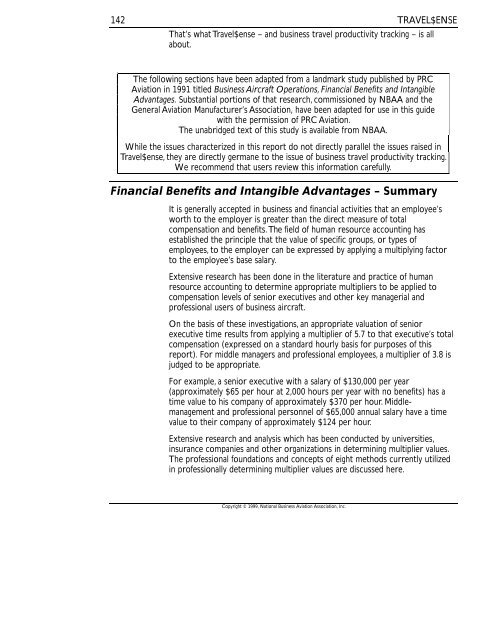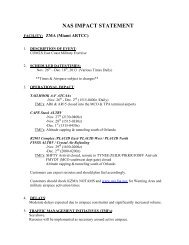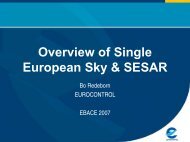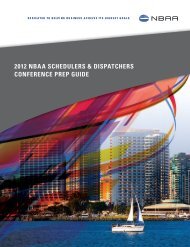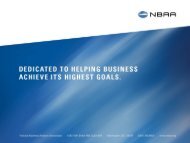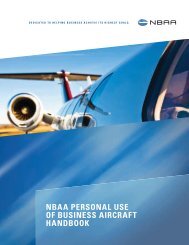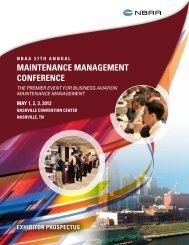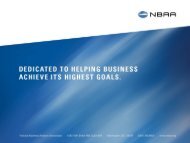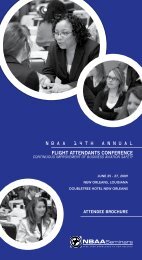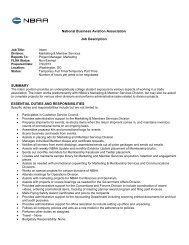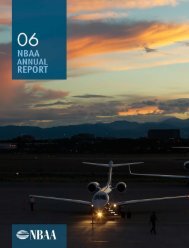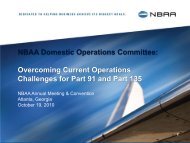Travel$ense User's Guide (PDF, 139 MB) - NBAA
Travel$ense User's Guide (PDF, 139 MB) - NBAA
Travel$ense User's Guide (PDF, 139 MB) - NBAA
- No tags were found...
Create successful ePaper yourself
Turn your PDF publications into a flip-book with our unique Google optimized e-Paper software.
142TRAVEL$ENSEThat’s what <strong>Travel$ense</strong> – and business travel productivity tracking – is allabout.The following sections have been adapted from a landmark study published by PRCAviation in 1991 titled Business Aircraft Operations, Financial Benefits and IntangibleAdvantages. Substantial portions of that research, commissioned by <strong>NBAA</strong> and theGeneral Aviation Manufacturer’s Association, have been adapted for use in this guidewith the permission of PRC Aviation.The unabridged text of this study is available from <strong>NBAA</strong>.While the issues characterized in this report do not directly parallel the issues raised in<strong>Travel$ense</strong>, they are directly germane to the issue of business travel productivity tracking.We recommend that users review this information carefully.Financial Benefits and Intangible Advantages – SummaryIt is generally accepted in business and financial activities that an employee’sworth to the employer is greater than the direct measure of totalcompensation and benefits. The field of human resource accounting hasestablished the principle that the value of specific groups, or types ofemployees, to the employer can be expressed by applying a multiplying factorto the employee’s base salary.Extensive research has been done in the literature and practice of humanresource accounting to determine appropriate multipliers to be applied tocompensation levels of senior executives and other key managerial andprofessional users of business aircraft.On the basis of these investigations, an appropriate valuation of seniorexecutive time results from applying a multiplier of 5.7 to that executive’s totalcompensation (expressed on a standard hourly basis for purposes of thisreport). For middle managers and professional employees, a multiplier of 3.8 isjudged to be appropriate.For example, a senior executive with a salary of $130,000 per year(approximately $65 per hour at 2,000 hours per year with no benefits) has atime value to his company of approximately $370 per hour. Middlemanagementand professional personnel of $65,000 annual salary have a timevalue to their company of approximately $124 per hour.Extensive research and analysis which has been conducted by universities,insurance companies and other organizations in determining multiplier values.The professional foundations and concepts of eight methods currently utilizedin professionally determining multiplier values are discussed here.Copyright © 1999, National Business Aviation Association, Inc.


